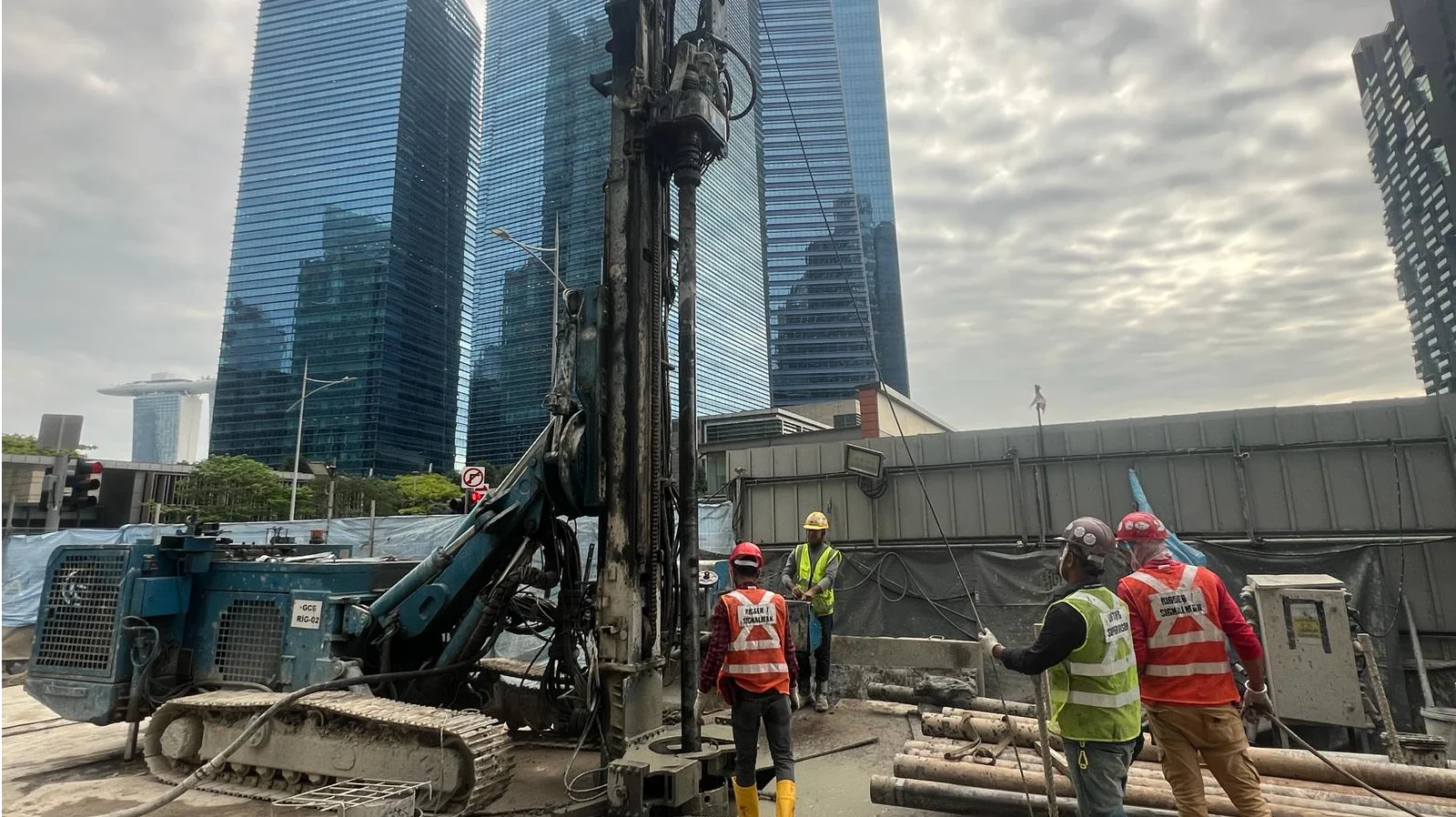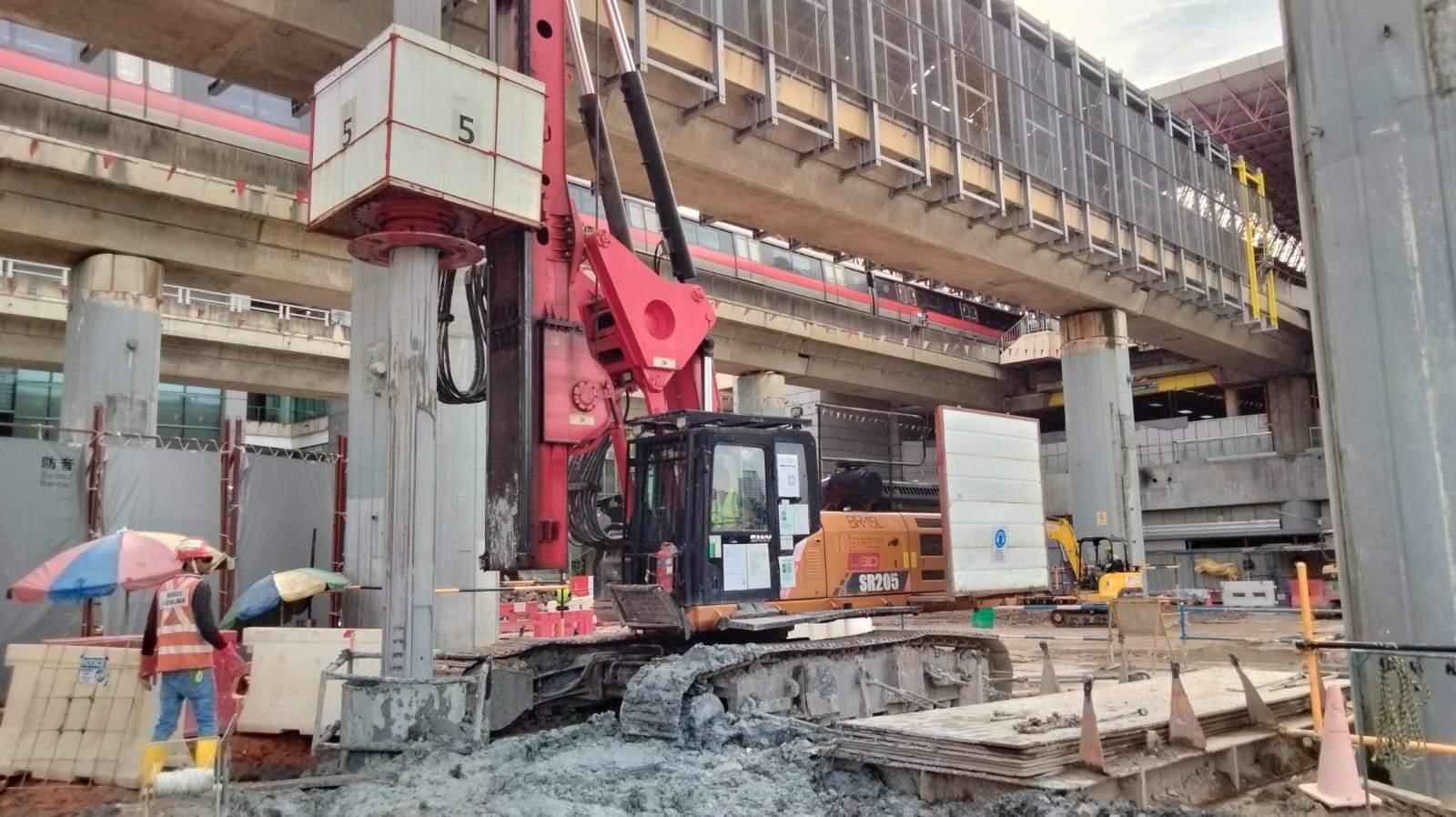Our Services
Services to meet your needs

Ground Improvement
Through a unique combination of engineering, construction and design disciplines and expertise.
Ground improvement encompasses a variety of techniques designed to enhance the properties of soil and rock, ensuring better performance and stability of structures built on or within them. These methods, including fissure grouting, TAM grouting, chemical grouting, and micropiles, address challenges such as weak or unstable ground conditions, water seepage, and inadequate load-bearing capacity.
By improving the engineering properties of the ground, these techniques reduce risks, increase safety, and extend the lifespan of construction projects. Ground improvement is essential in modern construction, enabling successful development in otherwise unsuitable conditions and ensuring the resilience and reliability of infrastructure.
Our Ground Improvement Solutions
Jet grouting is an advanced ground improvement technique used to stabilize and strengthen soil. By injecting a high-velocity jet of grout into the ground, this method creates solidified columns that enhance the soil's load-bearing capacity and reduce settlement. Jet grouting is highly versatile, allowing for precise treatment in various soil conditions and challenging environments. It is particularly effective in areas with weak or unstable soils, where traditional methods might not be sufficient. This technique ensures improved structural integrity and safety for construction projects, making it an essential solution for foundations, tunnels, and other critical infrastructure developments.
Fissure grout is a specialized grouting technique used to fill and stabilize cracks, voids, and fissures in soil and rock formations. This method involves injecting a fluid grout material into the ground to enhance its stability and load-bearing capacity. It is particularly useful in areas with fractured geology or where ground movement has created fissures that compromise structural integrity. The primary benefit of fissure grouting is its ability to reduce permeability and increase the cohesion of the treated area, thus preventing water ingress and further ground movement. Fissure grouting is an effective solution for mitigating the risks of settlement and ensuring the longevity and safety of structures built on challenging terrains.
TAM, or Tube a Manchette grouting, is a precise and controlled grouting method used to strengthen soil and rock formations. It involves the use of a double-packer system within a perforated tube to inject grout into specific zones at varying depths. This technique allows for targeted treatment, ensuring that the grout is delivered exactly where needed. TAM grouting is ideal for underpinning existing foundations, reducing ground settlement, and improving load-bearing capacities. Its precision makes it a preferred choice for projects requiring meticulous ground improvement without disturbing the surrounding structures.
Chemical grouting is a ground improvement technique that utilizes chemical solutions to stabilize and strengthen soil and rock formations. This method involves injecting chemical grout, which reacts with the soil or rock to form a solid, impermeable mass. Chemical grouts can be tailored to achieve desired properties, such as increased strength, reduced permeability, and enhanced durability. This technique is particularly effective for sealing water leaks, reinforcing excavation sites, and underpinning foundations in challenging ground conditions. Its versatility and effectiveness make it a reliable solution for a variety of geotechnical challenges.
Micro piles are small-diameter, high-capacity structural elements used for foundation support and stabilization. They are drilled and grouted into place, typically consisting of steel reinforcement and grout. Micropiles are highly adaptable and can be installed in various ground conditions, including dense urban areas with limited access. They provide excellent load transfer capabilities and are used to reinforce existing foundations, support new structures, and stabilize slopes. Micropiles are favored for their ability to accommodate complex site conditions and their effectiveness in improving foundation performance.
Bored piling is a method of creating deep foundations by drilling large-diameter holes into the ground and filling them with reinforced concrete. This technique is used to support heavy structures such as bridges, high-rise buildings, and industrial complexes. Bored piles are ideal for transferring loads to deeper, more stable soil or rock layers, making them suitable for areas with weak surface soils. The main benefits of bored piling include its ability to handle high loads, suitability for various ground conditions, and reduced noise and vibration during installation. This method ensures robust and reliable foundations, essential for the stability and longevity of large-scale construction projects.


